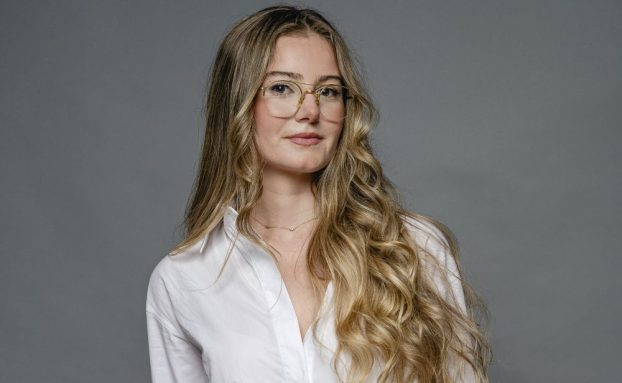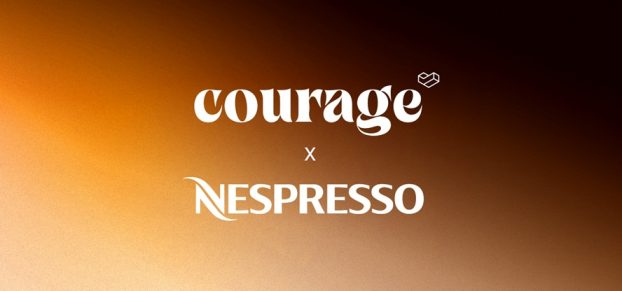
Promoting Amazon Prime’s The Pack, messaging was placed in the paws and jaws of furry friends.
When co-founders Robert Deckelbaum and Ryan Angelo launched Eat It Up Media in Montreal a decade ago, their primary focus – as the name suggests – was restaurants. The pair stumbled across well executed bill folder advertising in South Africa and realized there was nothing similar in Canada. They thought the concept would open the door for brands to directly connect with a hard-to-target demo of well-heeled customers. And they were right. EIUM went on to sign 100 high-end restaurants in Montreal, eventually landing a campaign with BMW through Media Experts that Deckelbaum says established the company as a serious channel. From there, EIUM grew throughout Canada, expanding the reach and offerings – from coffee sleeves in cafes, to diverse indoor and outdoor media as well as experiential marketing. Deckelbaum describes the growth as organic, led by brand needs. “We’re always pushing our clients, saying ‘give us a little bit more insight into the problems you’re facing, into the pockets you’re not able to reach, and we’ll come up with a solution.’”  A great example was their very first out-of-the-box initiative. For Bell’s Fibe launch in 16 small markets across Quebec and Ontario, Deckelbaum says the challenge was lack of media access – no out of home, no newspapers, nothing. “So, we thought: What about pizza? The one thing all the small towns had in common was mom and pop pizza places.” Over the course of eight weeks, EIUM signed up pizzerias, produced packaging and distributed 120,000 pizza boxes, creating a huge lift in Fibe sign-up rates. Recently, when Audi wanted to make a splash for its first all-electric SUV, EIUM took advantage of primary store-front space that had become vacant due to COVID to build 8-foot by 10-foot hologram walls in Toronto, Vancouver and Montreal (working with Touché! and Taxi).
A great example was their very first out-of-the-box initiative. For Bell’s Fibe launch in 16 small markets across Quebec and Ontario, Deckelbaum says the challenge was lack of media access – no out of home, no newspapers, nothing. “So, we thought: What about pizza? The one thing all the small towns had in common was mom and pop pizza places.” Over the course of eight weeks, EIUM signed up pizzerias, produced packaging and distributed 120,000 pizza boxes, creating a huge lift in Fibe sign-up rates. Recently, when Audi wanted to make a splash for its first all-electric SUV, EIUM took advantage of primary store-front space that had become vacant due to COVID to build 8-foot by 10-foot hologram walls in Toronto, Vancouver and Montreal (working with Touché! and Taxi).  It’s that kind of problem solving that’s attracted clients ranging from Cirque du Soleil and GMC, to Wrigley’s and Absolut Vodka. EIUM gained a reputation for being the company to go to when you want to speak to hard-to-reach consumers in unique ways. “People say: ‘Hey, what can we do within these markets? How can we speak to this demo?’” Sometimes it means plastering Borat across Toronto and Vancouver for Prime Video.
It’s that kind of problem solving that’s attracted clients ranging from Cirque du Soleil and GMC, to Wrigley’s and Absolut Vodka. EIUM gained a reputation for being the company to go to when you want to speak to hard-to-reach consumers in unique ways. “People say: ‘Hey, what can we do within these markets? How can we speak to this demo?’” Sometimes it means plastering Borat across Toronto and Vancouver for Prime Video.  But, for Deckelbaum, it’s not just about finding new ways to get attention, the focus has been building a major network of high-quality turn-key reach options outside the primary markets. “We realized that for telecom, automotive, CPG or banking, there was a big need for tertiary markets, but there was no real company established there. Everyone was focusing on the primary markets,” he says. As it has been for so many companies, COVID was a tipping point. It challenged EIUM’s business model. They were in restaurants, they had street teams, and the pandemic had shut those down. “It was a really good time to evolve,” says Deckelbaum. So, the development teams that had been busy signing up restaurants were tasked to create a broader-based suite of media options to access untapped smaller market opportunities. Over the last few months, EIUM has been expanding its network to more than 100 companies and 15,000 media assets – from digital and static billboards, benches, bike racks and mural walls to thousands of cafes, bars, pharmacies, clinics, gyms and retail stores, amassing over 1.5 billion impressions per month. The end result is a national network that stretches throughout tertiary markets that’s now as easy to access as any of the primary ones. “For buyers, it’s very difficult to deal with 100 different companies to put together a campaign to cover all markets,” he notes. “We’ve put together enough companies that you can develop a real presence and proper distribution across Canada.” The consolidated offering has simplified media buys, with the advantage of ad dollars now being channeled where they’re needed most – into the hands of the small, local businesses impacted by COVID, letting brands make a real difference in smaller communities. Over the next few months, Deckelbaum says the plan is to keep expanding the network: “It gives advertisers the ability to buy with ease, but spread their dollars a lot more evenly, and into markets that they weren’t able to service in the past.”
But, for Deckelbaum, it’s not just about finding new ways to get attention, the focus has been building a major network of high-quality turn-key reach options outside the primary markets. “We realized that for telecom, automotive, CPG or banking, there was a big need for tertiary markets, but there was no real company established there. Everyone was focusing on the primary markets,” he says. As it has been for so many companies, COVID was a tipping point. It challenged EIUM’s business model. They were in restaurants, they had street teams, and the pandemic had shut those down. “It was a really good time to evolve,” says Deckelbaum. So, the development teams that had been busy signing up restaurants were tasked to create a broader-based suite of media options to access untapped smaller market opportunities. Over the last few months, EIUM has been expanding its network to more than 100 companies and 15,000 media assets – from digital and static billboards, benches, bike racks and mural walls to thousands of cafes, bars, pharmacies, clinics, gyms and retail stores, amassing over 1.5 billion impressions per month. The end result is a national network that stretches throughout tertiary markets that’s now as easy to access as any of the primary ones. “For buyers, it’s very difficult to deal with 100 different companies to put together a campaign to cover all markets,” he notes. “We’ve put together enough companies that you can develop a real presence and proper distribution across Canada.” The consolidated offering has simplified media buys, with the advantage of ad dollars now being channeled where they’re needed most – into the hands of the small, local businesses impacted by COVID, letting brands make a real difference in smaller communities. Over the next few months, Deckelbaum says the plan is to keep expanding the network: “It gives advertisers the ability to buy with ease, but spread their dollars a lot more evenly, and into markets that they weren’t able to service in the past.”




















